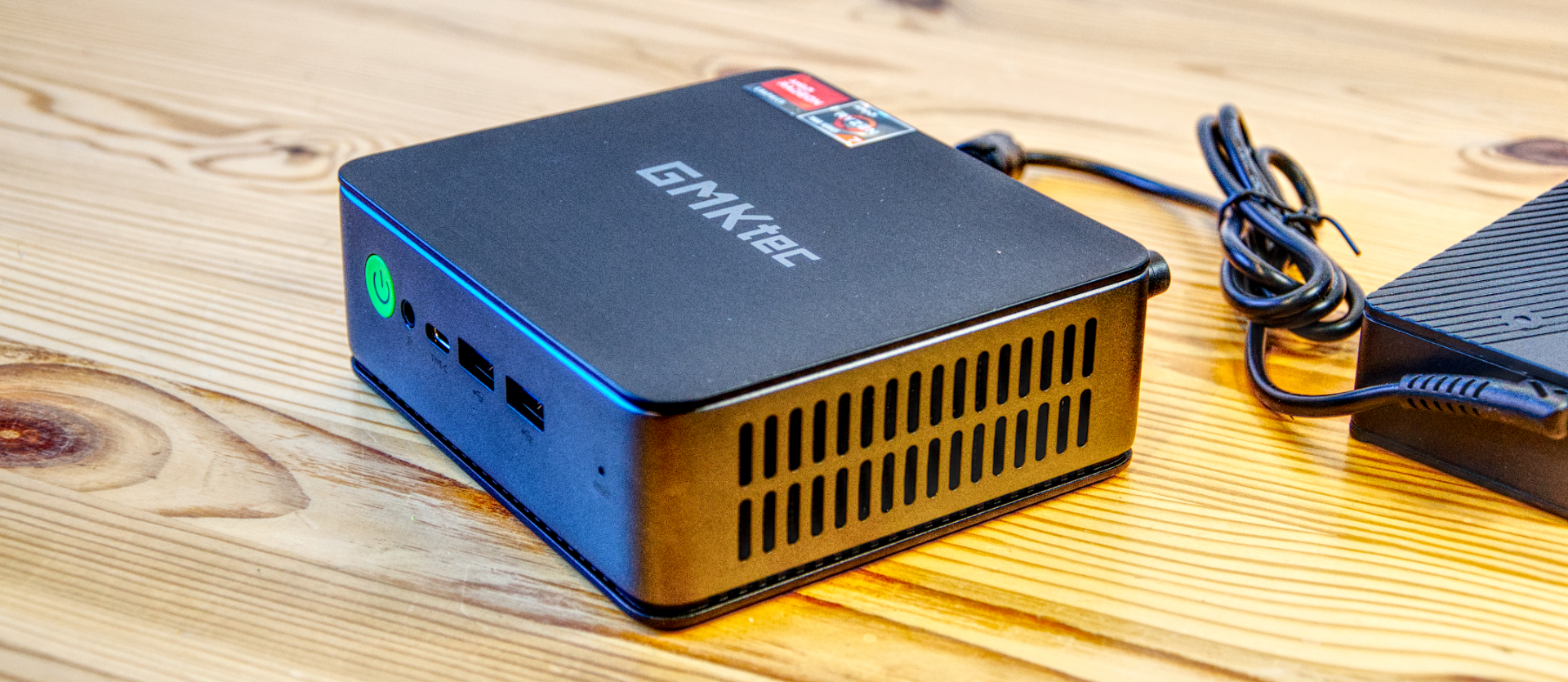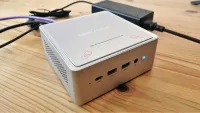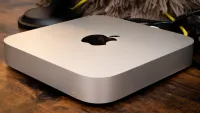TechRadar Verdict
The K2 outperforms its Intel counterpart, the M2, in almost every respect, and it also comes in a barebones SKU. It’s easy to upgrade and deploy and has enough ports for virtually any use model. If only GMKtec had installed a PCIe 4.0 NVMe drive.
Pros
- +
Highly affordable
- +
AMD powerhouse
- +
USB 4.0/Thunderbolt
Cons
- -
Only a PCIe 3.0 drive installed
Why you can trust TechRadar
GMKtec NucBox K2: 30-second review
Arriving with GMKtec’s NucBox M2 is the K2. It provides an AMD-powered alternative to the Intel-powered M2 with similar styling and size of enclosure.
While the K2 looks similar to the M2 externally, the internal components and layout are entirely different, and this machine offers more ports on the front side.
Where it also differs are the SKUs GMKtec has, with the K2 coming in three specifications, one of which is a ‘barebones’ model with no memory or storage included.
Alongside the $349 bring-your-own SKU, the other options include 16GB or 32GB models with 1TB of NVMe storage. The top tier costs only $479, or $120 more than the barebones machine, which would be remarkably hard to match if you added that memory, storage and the Windows 11 license.
Getting inside the K2 is easy, and installing the memory and NVMe drive can be accomplished in seconds.
As a NUC, two critical aspects of the K2 make it worth serious consideration. Those are the underlying AMD Ryzen platform and the fantastic port selection.
We’ve seen the AMD Ryzen 7 7735HS before in the excellent Beelink SER6 Pro 7735HS, and it's potent for a mobile CPU. Delivering more processing power and superior integrated graphics than its Intel 13th-generation counterparts, this is undoubtedly the NUC to have if you want the edge.
Sign up to the TechRadar Pro newsletter to get all the top news, opinion, features and guidance your business needs to succeed!
With the Ryzen 7 silicon comes a selection of ports that the Intel-based M2 can’t match. These include three 10GBps USB 3.2 Gen 2 ports, a single USB 2.0, a USB-C port that is USB 4.0 compliant (and Thunderbolt), dual HDMI 2.0 outputs, a 3.5mm audio jack and a 2.5GbE LAN port.
Using these ports effectively, the K2 can do most jobs except those that require discrete GPU power.
For the asking price, the K2 delivers a small but punchy system with relatively few vices.
GMKtec NucBox K2: Price and availability

- How much does it cost? Starting from $349
- When is it out? Available now
- Where can you get it? You can get it directly from GMKtec or from Amazon
GMKtec sells the K2 directly from its own website with free delivery worldwide and has also made it available on Amazon in most regions.
This machine is offered as ‘barebones’, without memory or storage. Or with 16GB of DDR5 and 1TB for $449, or 32GB and 1TB for $479.
That’s a remarkably competitive price when you consider that the M2 Intel-powered version of this machine costs more, only has a CPU with four cores, uses DDR4, has a less powerful GPU and comes with no USB 4.0 ports.
We thought the M2 was a good deal, but the K2 is a fantastic specification for any NUC costing under $500.
The direct competition for the K2 is the Beelink SER6 Pro 7735HS, a machine that uses the same AMD Ryzen 7 platform and has a similar port profile. The asking price for that hardware with 32GB of RAM and 512GB of storage is $609 on Amazon, making the K2 a significantly cheaper deal.
There are other choices that are cheaper, and the MINISFORUM Venus Series UM773 is much closer in cost at the review spec and a little less for a barebone system.
Overall, what GMKtec is asking for the K2 seems a reasonable price.
- Value: 4 / 5
GMKtec NucBox K2: Specifications
| CPU: | AMD Ryzen 7 7735HS (8 cores, 16 threads) |
| GPU: | Radeon 680M |
| RAM: | 32GB DDR5 4800 (expandable to 64GB) |
| Storage: | 1TB NVMe M.2 2280 |
| Ports | 2x USB 3.2 Gen2 Type-A, 1x 4.0 Type-C, 1x USB 3.2 Gen 1 Type-A, 1x USB 2.0, 2x HDMI 2.0, 1x universal audio jack |
| Networking: | 2.5GbE LAN, WiFi 6, Bluetooth 5.2 |
| OS: | Windows 11 Pro (pre-installed) |
| PSU: | 20V 6A |
| Dimensions: | 105*105*45mm |
GMKtec NucBox K2: Design
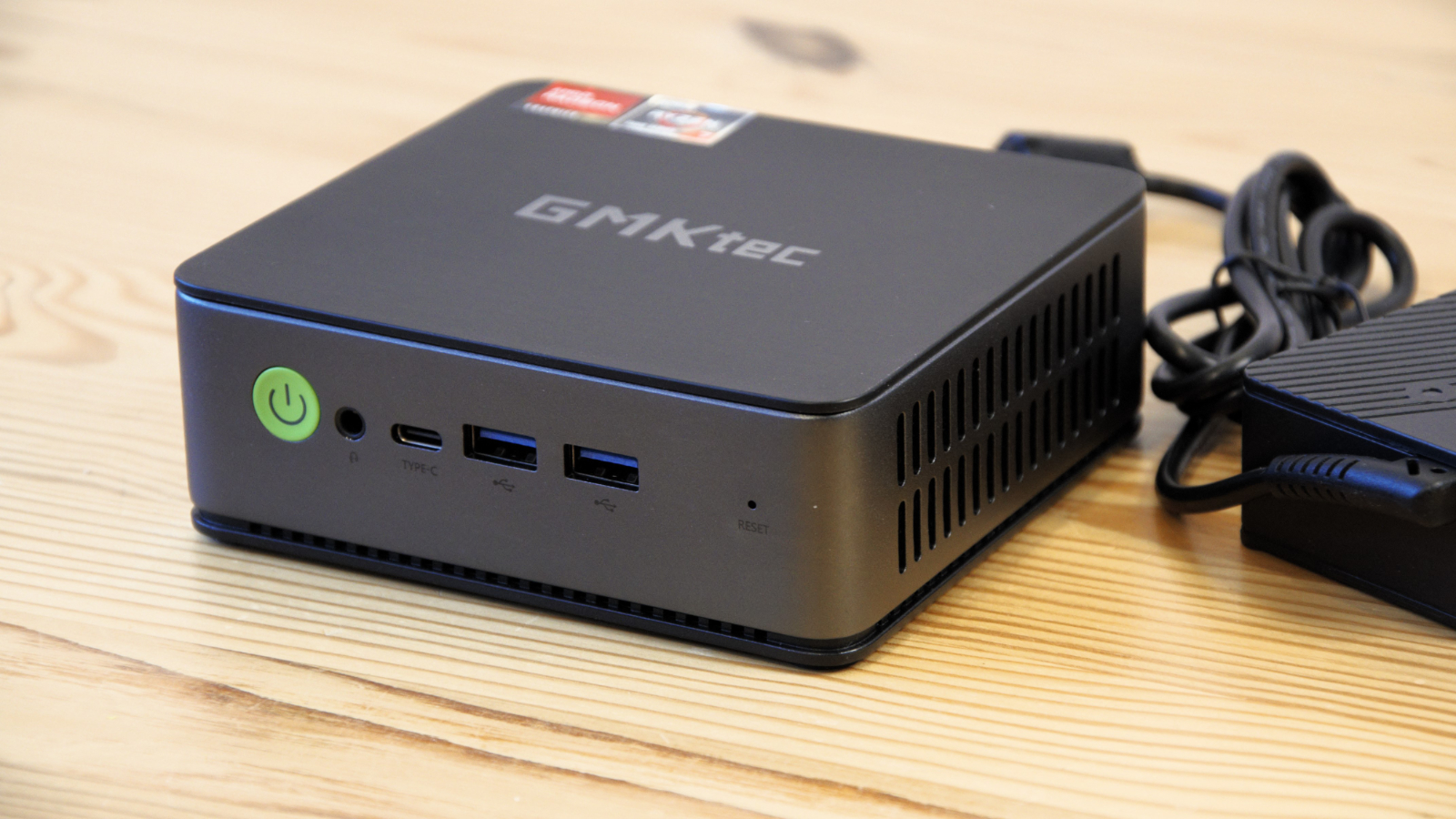
- Standard NUC size
- Easy access
- Better port labelling
The K2, like the M2, is a typical NUC made to accept a standard 4-inch motherboard and provide sufficient space to mount a cooling fan, memory, NVMe storage and relatively little else. In this model, GMKtec used a metal sleeve for the main body and then capped either end with plastic.
Where it diverges from the NUC rulebook as defined by the M2 and other designs, internal access on this machine is on top, not underneath. In the K2, the lid can be pulled off, with no tools required to gain entry.
With the lid removed, the two DDR5 SODIMM slots and the single M.2 2280 positions are accessible, and in our review hardware, the RAM was Crucial branded DDR5-4800, and storage was a 1TB Lexar NM610 Pro. A larger drive and more memory can be added, with the potential for at least 4TB of storage and 64GB of RAM in this tiny system.
Because of the inverted layout, compared with the M2, the warm air ejection is along the bottom rear edge, not the top. This airflow might warm cables that are entering the rear of the K2, but unless it overheats, this is unlikely to cause an issue.
Another change from the M2 is that the ports on the K2 are correctly labelled, and the Type-A ports are the correct colours. Blue is used for the USB 3.2 Gen 2 Type-A ports, and black for USB 2.0. On the M2, these were all blue, irrespective of type.
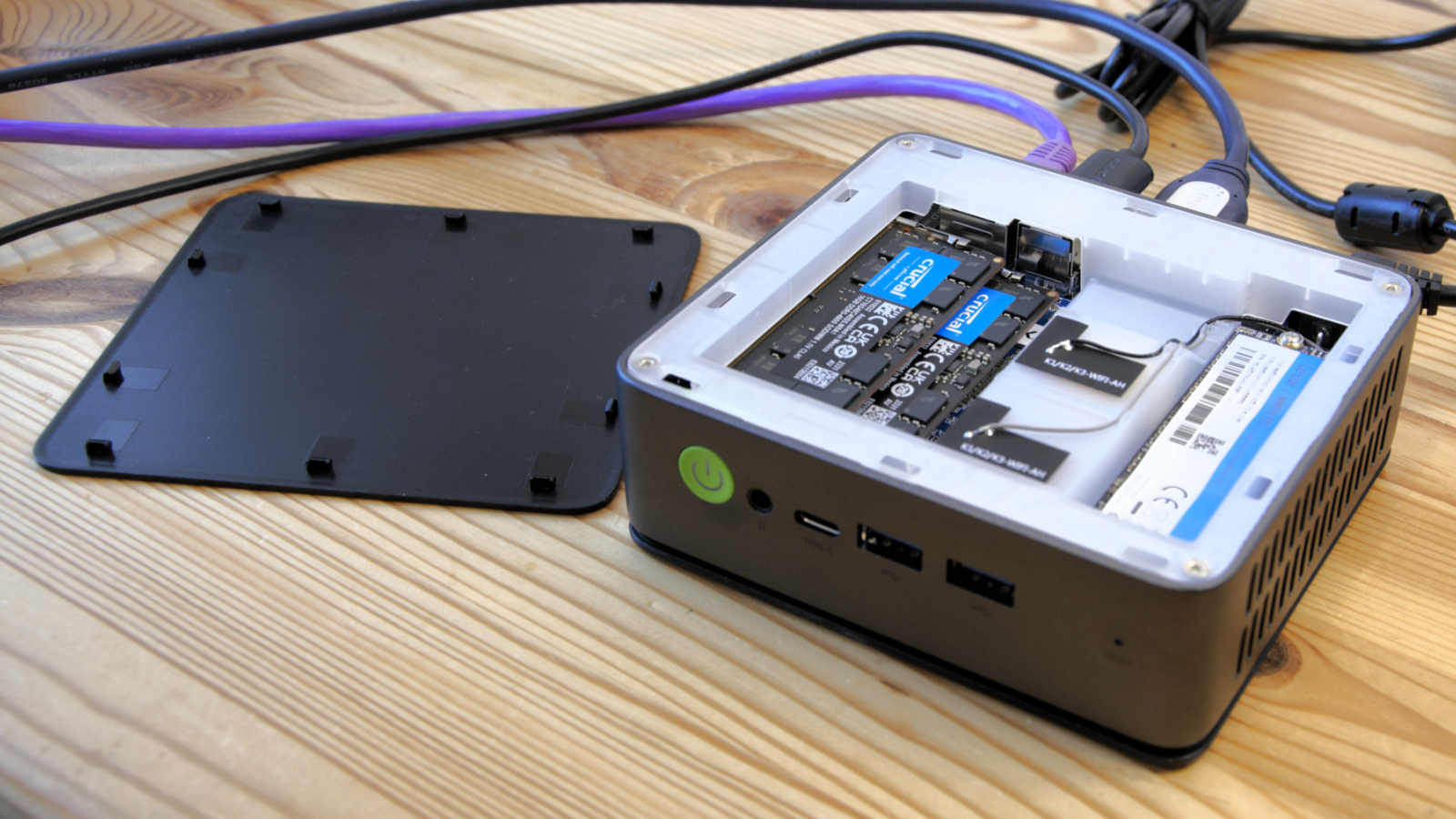
Oddly, the USB-C port is labelled as just 'USB-C' when technically it is USB 4.0/Thunderbolt, which should have a Thunderbolt logo accordingly.
As with all GMKtec NUC systems we’ve seen recently, the K2 comes with a simple mounting bracket that can be used to mount it on the rear of a monitor using the VESA holes.
The K2 is another NUC from GMKtec that doesn’t look especially elegant or dynamic, but critically, it has all the hardware and functionality that most NUC purchasers would want.
- Design: 4 / 5
GMKtec NucBox K2: Features
- Ryzen 7 Zen3+ power
- PCIe 4.0
When we first reviewed the Beelink SER6 Pro 7735HS, it soon became apparent that the AMD Ryzen 7735HS processor might have been designed for high-end laptops, but its natural home was undoubtedly the NUC.
The top rung of the Rembrandt-R cored mobile chips that first appeared in January of 2023. It uses a TPD between 25W and 54W, fabricated by TSMC using its 6nm FinFET process.
AMD has since moved on with the Phoenix 7040 series chips that use a Zen 4 architecture, but the Zen3+ structures used in this CPU still perform admirably.
With eight cores and 16 threads with a base clock of 3.2GHz and a maximum boost clock of 4.75GHz, this processor can handle single-threaded tasks and multi-threaded apps with equal aplomb.
The integrated GPU is the AMD Radeon 680M, an RDNA 2 design with 12 compute units, 768 shaders and a maximum clock speed of 2.2 GHz. For those wondering, the 680M outperforms the Intel Iris Xe by at least 30% in most benchmarks.
As this silicon was designed to be used in gaming laptops with a discrete GPU, AMD gave it plenty of PCIe lanes, with sixteen of the PCIe 4.0 variety. Without a discrete GPU in this NUC, GMKtec could splash PCIe lanes around on a four-channel M.2 NVMe slot and all the USB ports.
The only slight disappointment here is that the M.2 slot was installed with a PCIe 3.0 specification NVMe. This is a Lexar NM610 Pro and, therefore, was never going to fully exploit the potential of the NVMe slot.
Along with the system and accessories, GMKtec included a laptop-style PSU rated at 120W to power the system and any peripheral items connected by USB or Thunderbolt.

- Features: 4 / 5
GMKtec NucBox K2: Performance
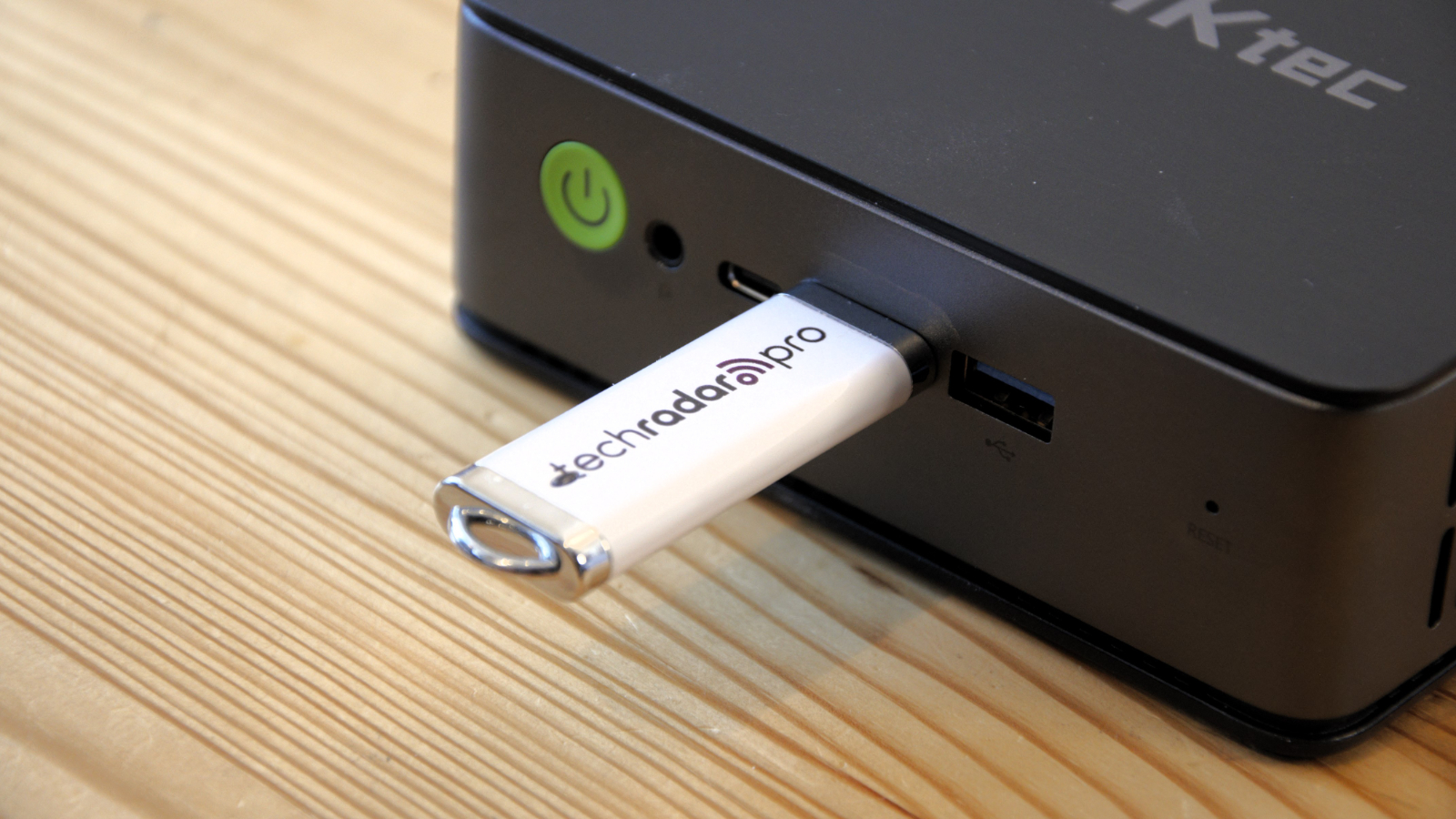
- Effective CPU
- Not gaming fodder
- PCIe 3.0 NVMe isn’t ideal
| Bench | Test | Score |
|---|---|---|
| 3DMark: | Wild Life: | 16,647 |
| Fire Strike: | 6,067 | |
| Time Spy: | 2,758 | |
| Cinebench R23 CPU: | Single core: | 1,501 |
| Multi core: | 11,451 | |
| Ratio: | 7.56 | |
| GeekBench 5: | Single core: | 1,550 |
| Multi core: | 9,300 | |
| OpenCL: | 29,955 | |
| CrystalDiskMark: | Sequential Read: | 3560MB/s |
| Sequential Write: | 2353MB/s | |
| PC Mark 10: | Office Test: | 6760 |
| Windows Experience Index: | Score: | 8.2 |
We like these numbers and liked them previously when we saw almost the same scores from the Beelink SER6 Pro 7735HS. That’s not a huge surprise, as these are effectively brothers from different mothers.
Compared to Intel NUCs, the AMD Ryzen 7 7735HS is slightly outperformed at single-core tasks due to the higher clock speed on Intel mobile parts. However, it takes the Intel Core i7-1360P with twelve cores to match it on multi-threaded tasks. That’s the CPU that Intel used in its last ever NUC, the Intel NUC 13 Pro, and it was a $1000 system at the time.
Less ambitious Intel chips, like the ten-core Core i7-12650H used in the Minisforum UN1265, can’t compete for multi-threaded processing, and with only DDR4 memory, the Iris Xe is significantly less powerful than the Radeon 680M that the Ryzen 7 has at its disposal.
That said, this isn’t a gaming machine, as the demands made by modern titles are ramping up significantly. It can be used to play simpler or legacy titles, playback 4K video and generate slideshows on multiple screens (up to three), but this wouldn’t be a good choice for detailed 3D environments or complex modelling.
As a more general NUC computing platform, this is a powerhouse, and it doesn’t even get hot when running challenging tasks.
The one place this system could be better is the storage or, rather, the poor choice of NVMe drive pre-installed in it. While the Lexar NM610 Pro is a decent performer for a PCIe 3.0 drive, it is in a PCIe 4.0 slot that could be occupied with a higher-specification device. Including the PCIe 3.0 drive was an obvious cost reduction decision, but using a faster drive would have positively impacted the PCMark 10 score and the Windows Experience index.
For the relatively modest asking price, the K2 is substantially faster than many $700 NUC and well worth what GMKtec asks for these performance levels.

- Performance: 5 / 5
GMKtec NucBox K2: Verdict
We liked the GMKtec NucBox M2, but the K2 outclasses it in many ways. For Intel purists, it isn’t from the company they follow, but this AMD system can run Windows 11 or Linux very smoothly and deliver an excellent user experience. Critically, this NUC has the port selection for maximum flexibility and connectivity, almost bar none.
For AMD platformed systems, until we see Phoenix and Dragon Series processors bring Zen4 into the NUC space, the Zen3+ silicon in the K2 is as good as it gets. Its performance is more than enough for most office applications and tasks, and it is highly affordable.
While a PCIe 4.0 NVMe drive should have been pre-installed in almost all other aspects, this is the type of NUC solution that we have no issue recommending.
Should you buy a GMKtec NucBox K2?
| Value | Very cheap barebones, and still affordable with memory and storage added. | 4 / 5 |
| Design | A metal enclosure and minimalist styling are the signatures of GMKtec. | 4 / 5 |
| Features | Easy to get inside for upgrades and has a fantastic port selection. | 4 / 5 |
| Performance | The best AMD-power NUC performance until new Zen4 chips come to this sector | 5 / 5 |
| Total | Power for almost every use, with the possible exception of games. | 4.5 / 5 |
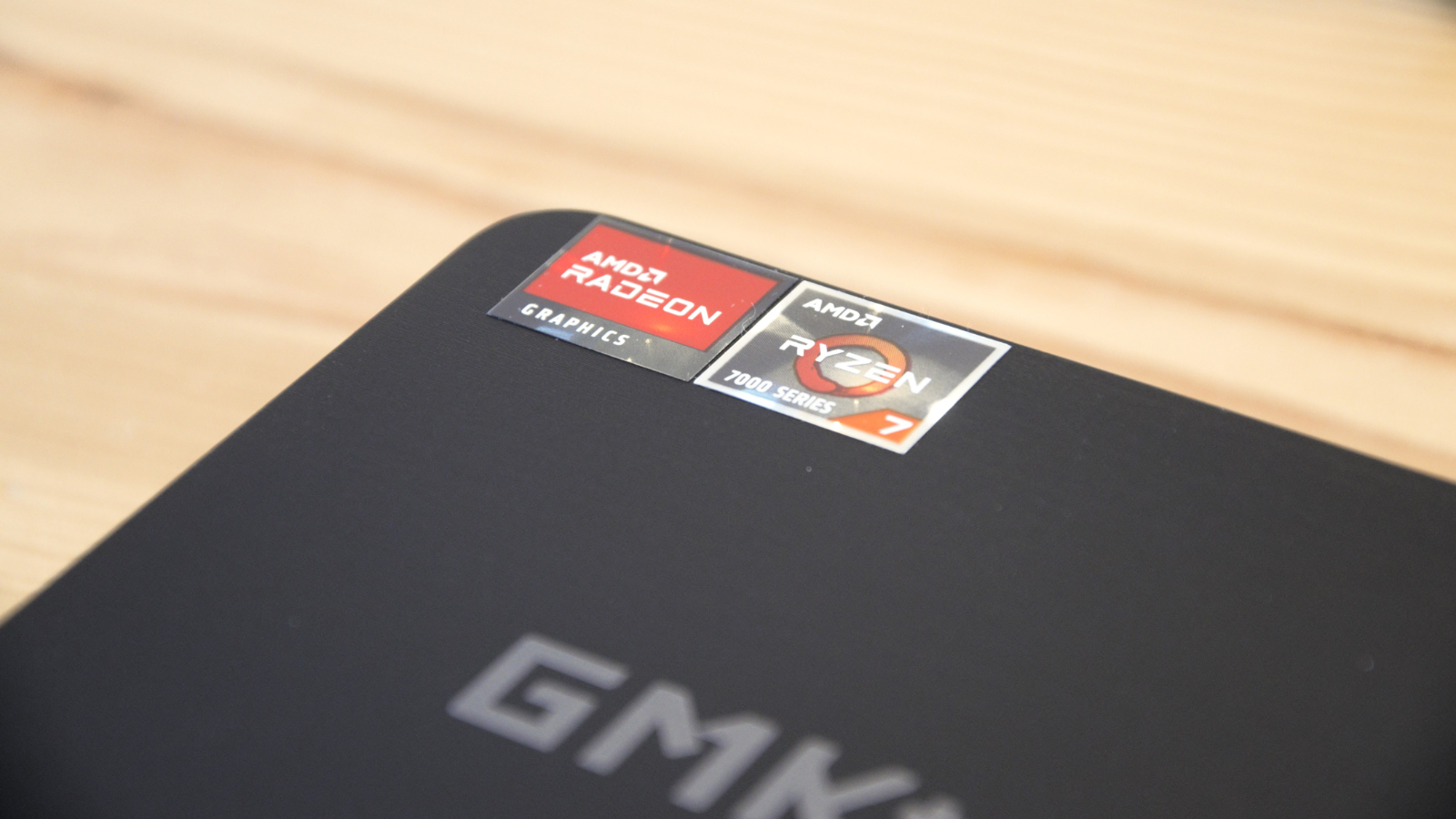
Buy it if...
You need a small office PC
Some of the cheaper NUC designs are limited in what they can do, but the K2 can handle any Office apps and easily fulfils the role of desktop replacement. Unless you need to add PCIe cards, this can do almost anything a desktop PC can do.
Flexibility is critical
The port selection of this machine offers countless possibilities when combined with a Thunderbolt Dock and/or external storage. There is enough power to handle plenty of file-sharing users, a massive media system, or a dedicated firewall. Easy to upgrade, this is one of the most flexible NUC systems around.
Don't buy it if...
You must have Intel
For those wanting an Intel NUC, the K2 has a brother, the M2, that will offer you that silicon source. But the K2 uses AMD technology, even if some components here, like the Thunderbolt chip, are made by Intel.
You need more graphics power
While the Radeon 680M in this NUC is generally better than the Iris Xe GPU that most Intel machines come with, it can’t deliver the performance levels of discrete video cards of almost any spec.
Sadly, very few NUCs offer a discrete GPU, and those needing high-performance graphics would be better investing in a desktop PC that can accept a full-sized video card.
Also consider
Beelink SER6 Pro 7735HS
Using the same platform as the K2, the SER6 Pro delivers equally impressive performance, unsurprisingly. There is no barebones option and comes with Crucial branded memory but an OEM NVMe drive. Getting access to the memory and storage is a little more convoluted in this machine, but this isn’t anything that most users will be doing on a daily basis.
Check out our Beelink SER6 Pro 7735HS review
Minisforum Venus NPB7
The NPB7 is the flagship of the Venus series and features the incredible Intel Core i7-13700H (14 cores, 20 threads) mobile CPU and up to 32GB of DDR5 RAM. It can be bought barebones with only the processor installed, RAM and M.2 NVMe storage to be provided by the customer. If you want a high-quality Intel NUC with bags of performance and Thunderbolt baked in, the NPB7 is worth the investment.
Check out our Minisforum Venus NPB7 review
Apple Mac Mini (2023)
Recently revamped, the Mini now comes with either the M2 or M2 Pro chip, and it experienced a small price reduction from the M1 2020 model.
However, this machine can’t be upgraded, so you need to buy the model that you will ever need from the outset. For the M2 Pro version with only 16GB of RAM and 512GB of RAM, it will cost you $1,299. Or, twice the price of the AS 5 and more, and with other options, one can approach $5000 of spend. Not for the economically challenged.
Check out our Apple Mac Mini (2023) review
If this Mini PC doesn't fit your requirement, check out our selection of the Best Mini PCs
Mark is an expert on 3D printers, drones and phones. He also covers storage, including SSDs, NAS drives and portable hard drives. He started writing in 1986 and has contributed to MicroMart, PC Format, 3D World, among others.
